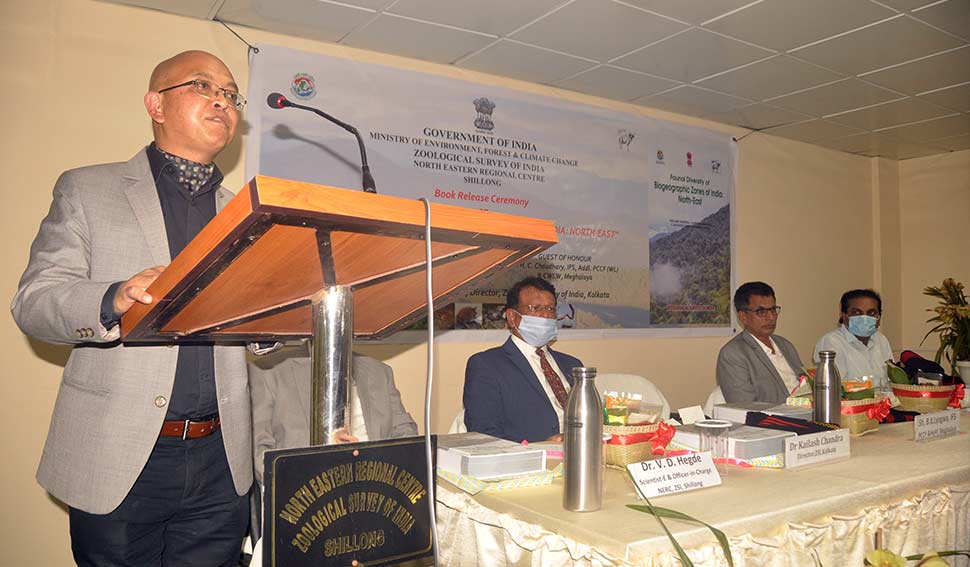ZSI releases book on ‘Faunal Diversity of Biogeographic Zones of India’

A book entitled “Faunal Diversity of Biogeographic Zones of India: North East” compiled by the scientists of the Zoological Survey of India (ZSI), Shillong was released by the Principal Chief Conservator of Forest (PCCF) BK Lyngwa on Thursday.
Also present was Chief Wildlife Warden HC Chaudhury as guest of honour.
Director of ZSI Dr Kailash Chandra addressed the gathering and apprised of the hard work put in during the compilation of this book, which is a comprehensive and exhaustive account of the faunistic resources of the North-East Biogeographic Zone.
Scientist-E of ZSI, Kolkata Dr C Raghunathan during his address highlighted the rich biodiversity of the studied region that includes six of the eight NE Indian states viz. Assam, Manipur, Meghalaya, Mizoram, Nagaland and Tripura.
Though the North East Biogeographic Zone constitutes only about 5.21% of the total Indian landmass, the Region harbours a rich faunistic diversity attributable to its being strategically positioned as a transition zone between Indo-Malayan and Indo-Chinese biogeographical regions and its being the meeting point of the Himalayan mountains and Peninsular India.
The book contains the updated information on the faunal diversity of North-East Biogeographic Zone – comprising of two biotic provinces – the Brahmaputra Valley and North-East Hills. Altogether, 18,527 species of fauna under 15 phyla from Protozoa to Chordata have been documented from the Region, representing about 18% of the total fauna known from India.
Phylum Arthropoda with 14,956 species represents more than 80% of the overall faunal diversity of this Region.
With regards to the biotic provinces mentioned above, North-East Hills includes 14,838 species, while the Brahmaputra Valley has 8,832 species.
State-wise, Meghalaya has 9,853 species, closely followed by Assam with 9,607 species; whereas, Manipur with 5,036 species, Nagaland with 3,869 species, Tripura with 3,605 species and Mizoram with 3,020 species are also documented.
Out of 718 threatened species of fauna from the country, 153 species are distributed in this Region, representing about 22.35% of the total threatened fauna of India.
Six species of Arthropods, 49 species of fishes, six species of amphibians, 17 species of reptiles, 42 species of birds and 33 species of mammals are included in the threatened list.
Among the six states, Assam with 100 species has the highest numbers of threatened animals.
The program was also attended by Dr. Nripemo Odyuo, Officer-in-Charge and other senior scientists from the Botanical Survey of India, Shillong.
Faculty members and students from St. Anthony’s College, Shillong, and the headman of Risa Colony, DM Pariat, and the media persons from various media houses were the other invitees who graced the occasion.

Leave a Reply